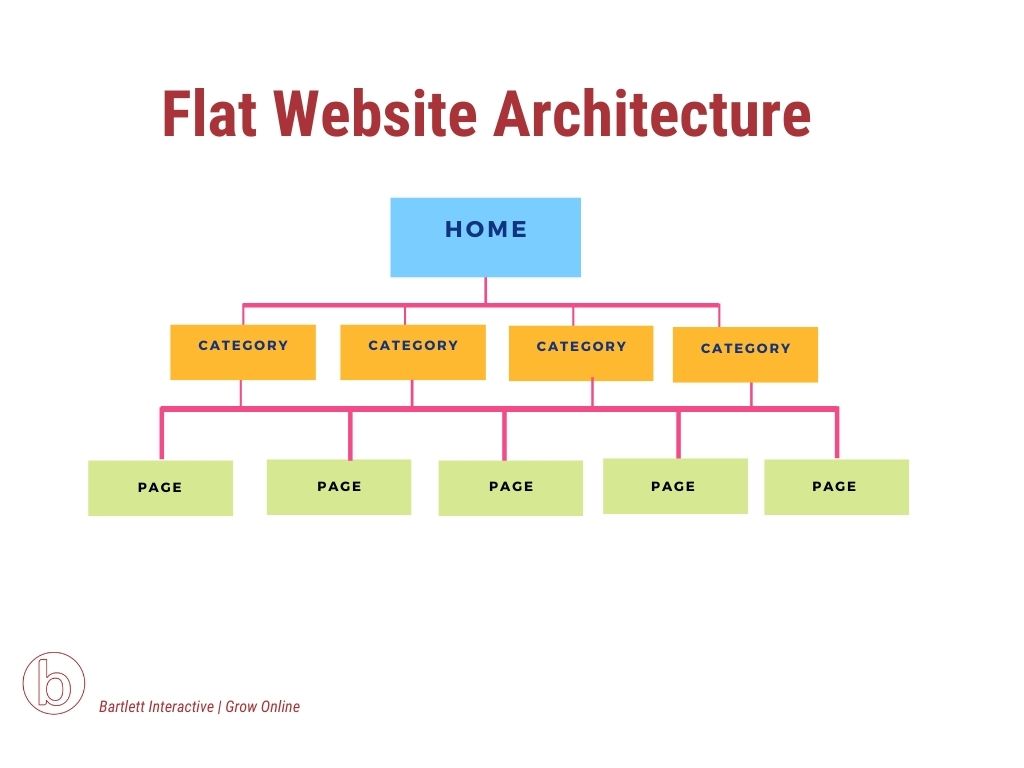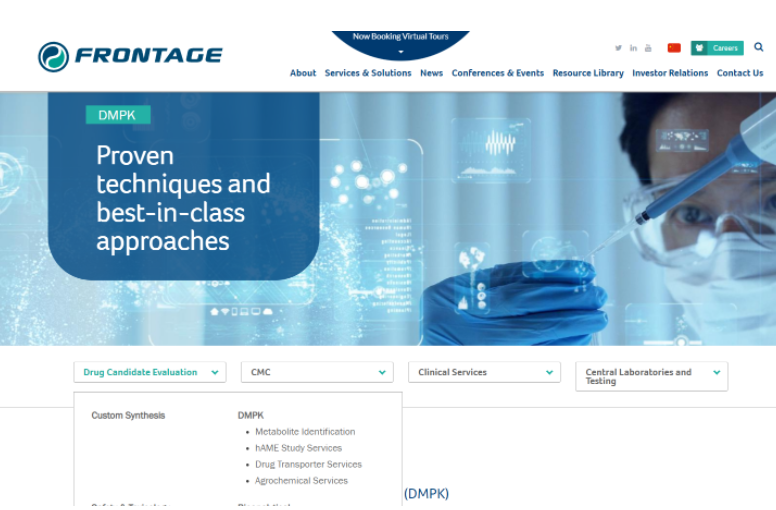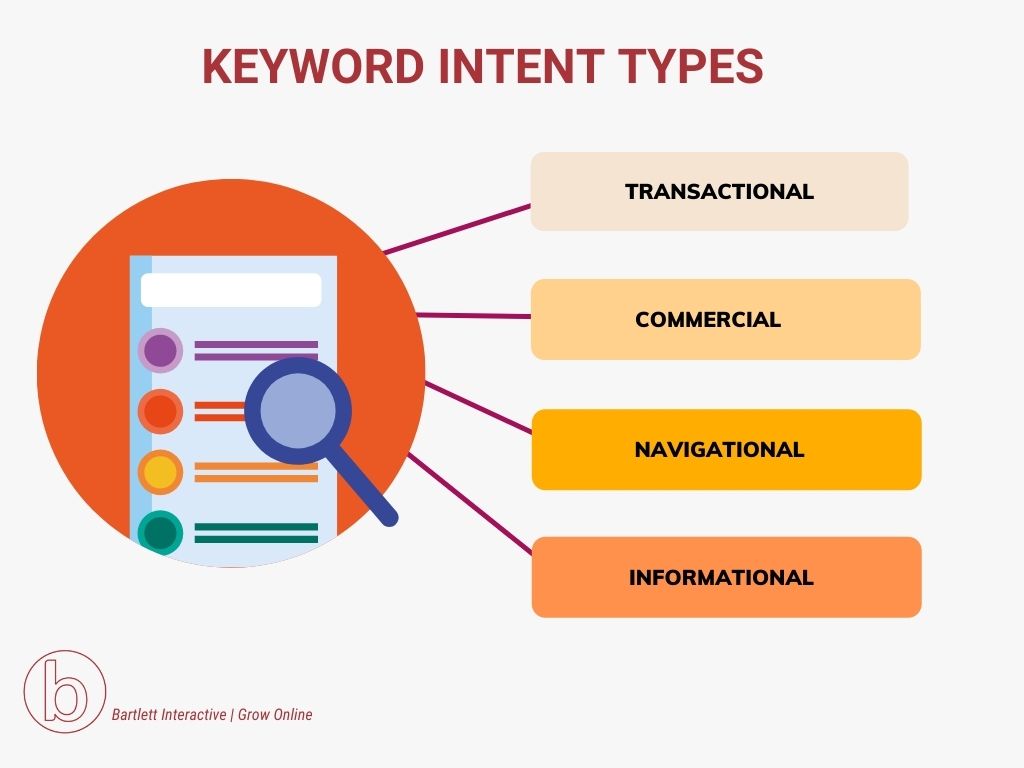4 Key Ways to Improve SEO for Large Healthcare Websites
Ready to boost your SEO ?

4 Key Ways to Improve SEO for Large Healthcare Websites
Healthcare companies that offer multiple services can pose a serious challenge in terms of SEO. With so many pages and categories, how can Google determine what your website is about in order to rank well for your target keywords?
Effective SEO for large healthcare websites begins with developing high-quality, unique content. But there are a few things to consider to ensure that your content appears in results when someone searches for your services.
We’ve put together 4 key ways to improve SEO for large healthcare websites.
- Create a Flat Site Architecture
- Focus on Keyword Intent
- Use Meta and Header Tags
- Make Interlinking Part of your Content Development Process
1. Create a Flat Site Architecture
One of the best ways to support SEO for large healthcare websites is to create a flat site architecture. This type of web structure means no matter what page you visit on a website, you are only a couple of clicks away from the homepage. A flat site architecture makes it easier for search engine spiders to index all of the pages on your site. And since user experience is now an important ranking factor in Google’s algorithm, making information easily accessible to visitors also helps to improve SEO.

A flat site architecture makes it easier for search engines to index all of the pages on your site.
For example, we worked with one large life science healthcare website, Frontage Laboratories, to help improve their SEO. Frontage is a full service CRO laboratory that manages clinical trials to help clients bring promising drug candidates to market. Like many healthcare websites, they have multiple service offerings such as drug development, lab services, testing, analysis, and more. And within each of these services are important subcategories of services they want to make sure are easy to find in search results.
Even with a large selection of services categories, their flat site architecture helps make it easy for search engines and visitors to determine what the site is about. To enhance this benefit, we worked on expanding their mega menu to better organize how each service category is related to service subcategories, so visitors can quickly find what they need.
This mega menu allows the visitor to browse solution categories at a glance. Then once the visitor lands on the page, a secondary dropdown menu on each service page helps the user know where they are in the site, and allows them to easily click back to the main category.

Frontage’s secondary dropdown menu on each service page helps the user know where they are in the site and can easily click back to the main category.
2. Focus on Keyword Intent
When you’re looking to rank for healthcare service pages, you need to think about which keywords your target audience would use to search for that service online. General terms alone won’t work. You need to select specific keywords aligned to your content–-also known as long-tail keywords–-to attract the right kind of search traffic. And you have to think about the user’s intent when they are performing this search.

Using keyword intent helps you develop more conversion related content
There are 4 basic types of keyword intent: transactional, commercial, navigational, and informational.
- Transactional keywords are those with an intent to find a solution and take action, such as download or contact a sales person.
- Commercial keywords are those with an intent to purchase, such as “buy” or “reviews.”
- Navigational keywords help users find a site or location, such as “doctor’s office near me.”
- And informational keywords are usually those keywords to search for a definition of something, or more information about something such as “cold symptoms.”
These intent keywords don’t get as much volume as general keywords, but they result in better conversion rates, lower website bounce rates, and set you apart from competitors.
Start your research using a keyword tool to create a list of general keywords related to your service offerings. Then think about the searcher’s intent when they are looking for this service. One way to get ideas on possible keywords is to use Google’s autocomplete function in the search window. Enter your keyword and see if any of the related suggestions are more closely related to your user’s intent.
3. Use Meta and Header Tags
Meta tags and header tags describe a page's content so search engines can tell what the page is about. Important header tags include using H1 tags for the title of the page, and H2 and H3 header tags to better organize the content on the page. These tags also help users scan the page to get to the information they need quickly.
Since Google doesn’t have the ability to view images, image alt tags describe what the image or graphic is about to search engines. They also allow users who are not able to visually see the images understand what the image is, and it also helps to keep your website ADA compliant.
Another way you can tag your site for SEO is Schema. Schema is a type of structured data or HTML markup that tells search engines what your website content is about. Large healthcare websites with multiple categories and pages can benefit from Schema because it helps algorithms work better to produce better search results.
4. Make Interlinking Part of Your Content Development Process
Once you have established a flat site architecture, selected the right keywords, and optimized pages using meta tags and headers, the next step is to interlink your pages. While some large healthcare websites may rank well, it is often because a few pages perform well in search, and the related pages linked to the ranking pages help boost SEO for the entire site.
John Mueller from Google says
“...internal linking helps us on the one hand to find pages, so that’s really important. It also helps us to get a bit of context about that specific page.”
Healthcare service categories should link to subcategory pages, and those pages should link to related pages to reinforce the relationship between these pages. Use anchor text related to the topic in your links.
But with a large number of website pages, how can you do this efficiently? It’s important to know how your pages relate to each other. Visualizing your internal link structure can help you build related links between pages across your site. There are link mapping tools available such as Sitebulb, but you can also use an Excel or Google spreadsheet to list categories and related pages.
Creating high quality content helps boost your credibility and gain trust from your target audience. And improving SEO for your large healthcare website expands your audience by appearing in relevant search results right when people are actively seeking your service.
with a Booster program for Healthcare companies.
